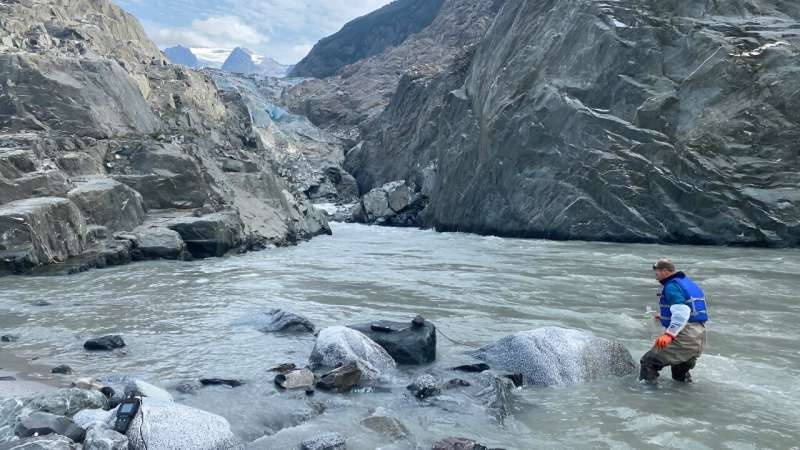This article has been reviewed according to Science X's editorial process and policies. Editors have highlighted the following attributes while ensuring the content's credibility:
fact-checked
proofread
Study catalogs how dissolved inorganic carbon moves through southeast Alaska's waterways

Understanding carbon transport can offer important information about a changing climate. For instance, it can help scientists measure ocean acidification or other threats increased carbon levels pose to aquatic ecosystems. But one major, and often overlooked, source of carbon in the marine environment is dissolved inorganic carbon (DIC), transported from land to ocean by streams and rivers.
An article published in Journal of Geophysical Research: Biogeosciences by John Harley and team examines, with greater spatial and temporal resolution than ever before, how DIC moves through the Southeast Alaska Drainage Basin—which spans a coastal region shaped by glaciers, heavy rainfall, and dense rainforest—into the Gulf of Alaska.
The researchers analyzed 2,455 watersheds throughout a rugged coastal region of Alaska, British Columbia, and the Yukon territory. These watersheds contain both large rivers and smaller streams and freshwater sources, including rainfall, snowmelt, and glacier melt.
The researchers then classified the watersheds on the basis of their discharge regime, or seasonal pattern of streamflow, and whether they contain karst, a type of landscape composed of soluble carbonate rocks such as limestone.
Using historic data from the U.S. Geological Survey and current DIC measurements from streams in southeast Alaska, the researchers created a model that can predict how much carbon enters these marine ecosystems each month. Their findings correlated with past estimates, but the new models offered much more precise, detailed measurements of how DIC is discharged into ocean waters.
The models used in this study can be further refined and developed to help predict what DIC outputs in the Gulf of Alaska might look like in the future—valuable information to the communities in the region that depend on fishing and other marine resources.
More information: John R. Harley et al, Riverine Dissolved Inorganic Carbon Export From the Southeast Alaskan Drainage Basin With Implications for Coastal Ocean Processes, Journal of Geophysical Research: Biogeosciences (2023). DOI: 10.1029/2023JG007609
Provided by Eos
This story is republished courtesy of Eos, hosted by the American Geophysical Union. Read the original story here.



















